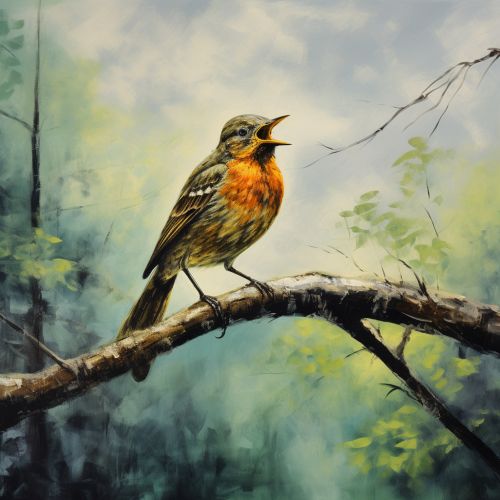The Evolution of Bird Song and Communication
Introduction
Bird song and communication have evolved over millions of years, shaping the diverse array of avian species we see today. The study of bird song and communication is a complex field, encompassing various disciplines such as ethology, neurobiology, and evolutionary biology. This article aims to provide a comprehensive understanding of the evolution of bird song and communication, delving into the mechanisms, theories, and implications of this fascinating aspect of avian biology.


Evolution of Bird Song
Bird song, a specialized form of bird communication, has evolved through a process known as sexual selection. This form of natural selection, proposed by Charles Darwin, suggests that traits that enhance an individual's ability to attract mates will be favored and passed on to subsequent generations.
Sexual Selection and Bird Song
Sexual selection has played a significant role in the evolution of bird song. Males often use their songs to attract females and deter rival males. The complexity and quality of a male's song can indicate his fitness, thereby influencing the female's choice. This has led to the evolution of intricate and diverse bird songs across different species.
Song Learning and Cultural Transmission
Bird song learning is a complex process involving both genetic and environmental factors. Young birds typically learn their songs from adult "tutors," usually their fathers. This process of cultural transmission has significant implications for the evolution of bird song, as it allows for rapid changes in song patterns across generations.
Neurobiology of Bird Song
The neurobiology of bird song is a rapidly expanding field of research. Songbirds possess a specialized set of brain structures, known as the song system, which is involved in the production and learning of songs. Understanding the neurobiology of bird song can provide insights into the mechanisms underlying its evolution.
Evolution of Bird Communication
Bird communication extends beyond song and involves a range of visual and auditory signals. The evolution of bird communication is driven by various factors, including environmental constraints, social dynamics, and predator-prey interactions.
Visual Signals
Visual signals, such as plumage coloration and display behaviors, play a crucial role in bird communication. The evolution of these signals is often influenced by sexual selection, with brightly colored plumage and elaborate displays serving to attract mates.
Auditory Signals
In addition to song, birds use a variety of other auditory signals for communication. These include calls, which convey a wide range of information such as alarm signals, food location, and social bonding. The evolution of these signals is shaped by various factors, including ecological conditions and social structure.
Multimodal Communication
Birds often use multimodal communication, combining visual and auditory signals to convey information. The evolution of multimodal communication in birds is a complex process, influenced by various ecological and social factors.
Implications and Future Directions
The study of the evolution of bird song and communication has far-reaching implications, contributing to our understanding of animal behavior, neurobiology, and evolution. Future research in this field promises to shed light on the intricate mechanisms underlying bird song and communication, offering exciting prospects for scientific discovery.
